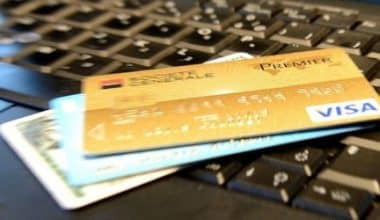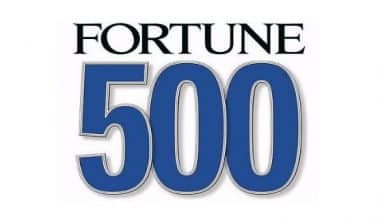Typically, businesses rely on merchandise to produce revenues and grow or expand as a firm. Depending on the sort of item, different forms of merchandise often have distinct effects on both businesses and customers. When developing or planning pricing and company strategies, sales and marketing professionals may benefit from learning about these types of goods. In this post, we will explore what merchandise is, including the various types.
What Is Merchandise?
A product that can be bought or sold is referred to as merchandise (or merch). For example, all products in a supermarket are purchased from a manufacturer and sold to customers. Merchandise can refer to any item for sale, such as garments at a clothing store or phones in an electronics store.
Why Should You Care About Merchandise?
In today’s society, goods keeps the globe turning and our economic demands met. Modern customers struggle to exist in the absence of merchandise. Everything is merchandise, whether it is a want or a need. Companies require merchandise in order to sell and profit. Merchandise is crucial since it meets all of our demands.
What Is Wholesale Merchandise?
Wholesale merchandise is a wide range of products that are intended for retailers rather than end users. The wholesale merchandise is sold by a distributor or wholesaler since it involves the sale of items to anyone other than the final buyer.
What Is Merchandise Inventory?
A merchandise inventory is a list of all products purchased by a corporation to resell to customers at a higher price. Wholesalers, distributors, and retailers buy products from manufacturers and resell them in store or online. Retailers intend to sell their item inventory directly to customers, whereas distributors and wholesalers intend to sell it to retailers.
Types Of Merchandise
#1. Convenience goods
Convenience products are items that individuals must have for basic survival and health. Food, clothing, basic medicine, toothpaste, soap, and cleaning supplies are examples of such items. People buy convenience goods with minimal effort and thought because they can usually find these readily available commodities in a variety of places. Convenience foods can also come in a variety of flavours. When a consumer cannot locate their preferred brand, they may purchase an alternative brand.
These items are frequently affordable; however, this also implies that they may be more price-sensitive. Because of their low opportunity cost, enterprises frequently sell huge quantities of these commodities at a faster rate than other goods. Companies frequently monitor the pricing and demand for convenience goods to ensure that price increases do not affect the quantity of items purchased by customers.
#2. Impulse goods
Customers who buy impulse items did not intend to do so when they visited the store. They may arrive at a store with a shopping list and a budget in hand, but they may also add an extra item or two after spotting it on a shelf. Customers frequently see these items and pick them up without giving them much thought.
Stores frequently rely on the display and placement of these things to sell them. Customers are often drawn to well-displayed impulse items. Candy, cold drinks, and periodicals are examples of impulse purchases. A corporation may display these things near a checkout counter or near the front of the store so that people can purchase them while they are already purchasing other items.
#3. Shopping products
Customers often study or want to learn more about shopping products before purchasing them. Customers frequently research pricing and features before purchasing the same sort of shopping merchandise from multiple companies. They may also assess the emotional satisfaction of possessing the goods when comparing quality, content, appearance, and other factors. This also implies that shoppers may purchase this type of thing for a lower price than other forms of merchandise. Smartphones, furniture, clothing, other devices, and vehicles are some examples of shopping products.
#4. Specialty goods
Speciality goods are items that are in restricted supply, have luxury associations, or are produced by specific enterprises that may not have many convenient locations. Customers frequently travel vast distances, conduct extensive research, and pay a premium for a speciality item. Because specialty items are generally expensive, clients are often picky and will not accept substitutes or alternative brands. Customers may not compare these things to similar items from other companies due to the original item’s status or worth. Luxury items such as vehicles, apparel, custom-made furniture, and imported booze are examples of specialist goods.
Merchandise That Improves Customer Experience
These types of items specifically promote store profitability and often improve client experiences in various ways, depending on the item. Here’s a breakdown of six of these items and how they affect both retailers and customers:
#1. Destination merchandise
Destination product is an item that encourages customers to visit a business while ignoring identical items from other retailers or competitors. When shoppers compare them to other brands, these are frequently the things that remain the most appealing. Destination merchandise may include limited edition items, items not sold in other stores, or regular stock items that outperform competitors. When selling these things, a store may additionally include attractive prices. Specialty products and brands, as well as location-specific things, are examples of destination merchandise.
#2. Image enhancers
Image enhancers are goods that impress and allure clients but do not always encourage them to purchase them. These objects serve as visual cues to draw clients deeper into the store and may spark a conversation. Image enhancers may also produce free publicity for the brand via word-of-mouth advertising from store visitors. Because many customers do not purchase these things, businesses often keep a low quantity of them. Image enhancers can include pricey and luxurious products as well as unique items.
#3. Transaction builders
Transaction builders are major items that require the purchase of additional items in order for the main item to function. Stores may give discounts on the core product but still earn when customers purchase extra items and accessories. When marketing these products, sales personnel frequently use add-on sale strategies. Stores may also deliberately position these things near to one another so that shoppers may readily obtain them. Pet food is an example of a major product. A food bowl, a water bowl, a nonslip pad to set the bowls on, pet toys, and other such items may be included.
#4. Traffic builders
Traffic builders are goods that attract customers regularly and may aid in customer retention. These goods may entice a consumer to spend more time in the store. A petrol station, for example, may also sell a small range of hot food, apparel or lottery tickets. Traffic generators may also feature interactive product displays, which do not always result in a sale but do encourage customers to return to the store.
#5. Profit generators
A profit generator is a product that sells with high margins, resulting in big earnings even after business expenses are deducted. Stores frequently include these goods among the general merchandise they sell. They may also provide discounts to clients while maintaining a large profit margin. For example, a grocery store’s deli may be the spot where the most profit-producing items are sold. Cosmetics and expensive wine may also be profit generators.
#6. Turf protectors
Turf protectors are things that draw customers into a store but do not always fit with the company’s chosen product type. For example, a corporation may like to sell high-quality cosmetics, but they also include lower-cost or average-quality cosmetics in their product line to keep a consistent consumer base. Companies may lower or change the prices of these things in response to market changes. Turf protector products can also assist businesses in developing a pricing plan that outperforms competitors or maintains a specified market share within their target market.
General Merchandise
The things you offer as a store fall into one of two broad categories. The first is groceries and food products, and the second is general stuff, which is a catch-all term for pretty much anything that isn’t groceries, from hearing aid batteries to large appliances. Some definitions go a step further in defining who is or is not a general merchandise shop, barring items such as building supplies or used products.
In reality, stores frequently sell both groceries and miscellaneous products. Groceries, for example, made up more than half of Walmart’s U.S. income in 2017, whereas supermarket giant Kroger reported nongrocery sales accounting for more than 20% of its grocery sales.
The Perishability Problem
Perishability is a significant differentiator between groceries and general items. Produce, meats, and baked goods have a shelf life defined in days, which is common for grocery items. This does not apply to canned and dry items, but it does mean that a supermarket has little leeway when stocking the shelves.
Because general stuff isn’t perishable, there’s less pressure to turn over inventory quickly. Of course, there are exceptions. Although technology and apparel are not perishable, those markets shift so swiftly that you may have to take a large write-down on your unsold inventory after only a few months.
General Merchandise Retailers
The majority of the establishments visible from your window are general merchandise retailers of one kind or another. Despite their recent expansion into grocery sales, big-box warehouse clubs and department stores are classified as general goods merchants. The majority of niche merchants also sell general products. They don’t have the large selection of products that a department store has but instead specialise in a specific category, such as shoes, cameras, or sporting goods.
It’s a terrific strategy for a small retailer looking to compete with the big box stores. They have a little bit of everything, whereas small, specialised merchants have a lot more of one thing in particular.
General Merchandise Wholesaling
Retail isn’t the only way to profit from general products. You can also wholesale general products if you want to start your own business. The large chains are certainly out of your price range at first, but there is plenty of opportunity to earn a living by selling to smaller businesses. You’d need to build contacts with producers or distributors of eligible products before selling them to stores in your area.
If you’ve ever purchased a useful gadget from a petrol station or convenience shop, it was there because an entrepreneur spotted an opportunity and convinced the store’s proprietors to stock and sell it.
What Is The Difference Between Merchandise And Merchandising?
A product that is bought or sold is referred to as merchandise. It is the driving force behind today’s economy. Merchandising, on the other hand, is the act of advertising a product in order to get people to buy it. Promotions, giveaways, or providing an attractive showcase for particular products are examples of merchandising.
A supermarket recently received a shipment of new shampoo, so they placed it in a special spot and highlighted it for everybody to see. Special incentives may be made to persuade people to purchase the shampoo.
- BUSINESS DEFINITION: Types, Examples and Strategy
- The Top 7 Websites which are Best for Shopping for Clothes and Merchandise
- RETAIL INDUSTRY: How Does It Work?
- WHAT IS A MERCHANDISER: Meaning, Qualification, Salary, Skills & Duty






